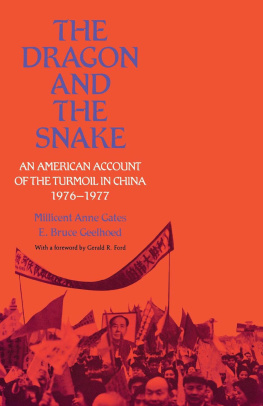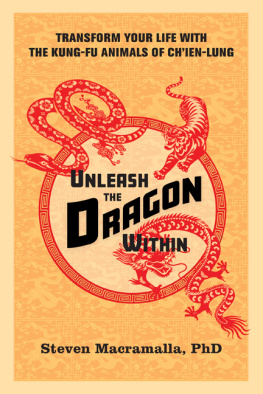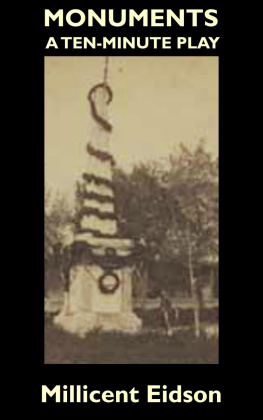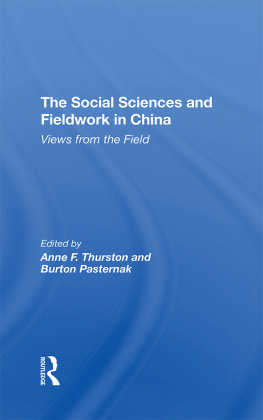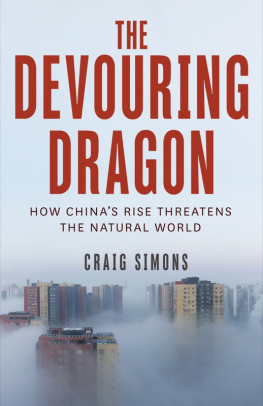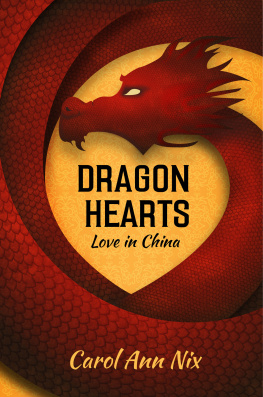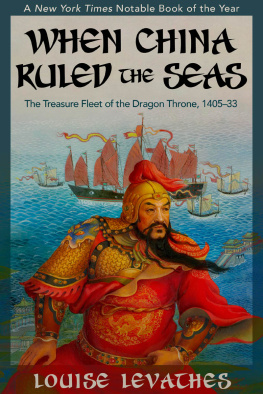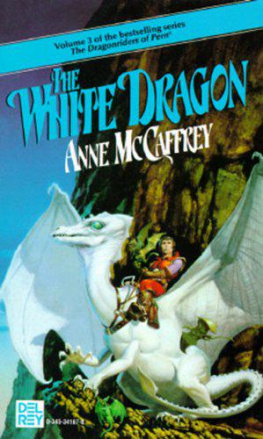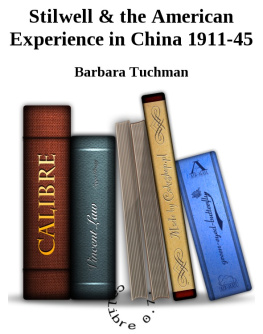THE DRAGON AND THE SNAKE
Thomas S. and Anne Gates at the Great Wall
THE DRAGON & THE SNAKE
An American Account of the Turmoil in China 19761977
by Millicent Anne Gates and E. Bruce Geelhoed 
With a Foreword by Gerald R. Ford
Permission is hereby acknowledged to reprint material from the following sources.
Michel Oksenburg and Sai-cheung Yeung, Hua Kuo-fengs Pre-Cultural Revolution Years, 19491960: The Making of a Political Generalist. China Quarterly 69 (March 1977). Reprinted by permission of the United States Information Agency.
Henry Kissinger, Years of Upheaval. Reprinted by permission of Little, Brown and Company.
Harrison Salisbury, China: A Century of Revolution. Reprinted by permission of Henry Holt and Company.
Ross Terrill, The White-Boned Demon. Reprinted by permission of William Morrow & Company, Inc.
Copyright1986 by the University of Pennsylvania Press All rights reserved
Library of Congress Cataloging-in-Publication Data
Gates, Millicent Anne.
The dragon & the snake.
Bibliography: p.
Includes index.
1. ChinaPolitics and government1976
I. Geelhoed, E. Bruce, 1948 . II. Title.
III. Title: Dragon and the snake.
DS779.26.G38 1986 951.05'7 86-19218
ISBN 0-8122-8036-9
To Thomas S. Gates III
Contents
Foreword
The Dragon and the Snake: An American Account of the Turmoil in China, 19761977 recounts the story of Thomas S. Gatess leadership of the United States Liaison Office to the Peoples Republic of China during a crucial period in recent Chinese-American relations. It is also an account of one aspect of Tom Gatess distinguished career of service to America, in a post which played an important part in the foreign policy of my administration.
I first met Tom Gates during the early years of World War II when we were shipmates aboard the U.S.S. Monterey (CVL 26) in the Pacific. The relatively brief time which we served together in the Pacific was only the prelude, however, to a friendship which grew and lasted between us for the next four decades. We became especially close during the 1950s when I served in the United States House of Representatives as a member of the Subcommittee on Defense Appropriations of the House Committee on Appropriations, and Tom Gates regularly testified before our committee in his capacity as secretary of the navy, and then later as secretary of defense, in the administration of Dwight D. Eisenhower. As a result of our many experiences together, I came to admire and greatly respect Tom as a man who was totally dedicated to his country and who also possessed the high degree of sound judgment so necessary to effective leadership in our nations Department of Defense.
In 1976, as president I faced the decision of appointing a successor to George Bush as the chief of the United States Liaison Office in Peking and, in surveying the list of possible candidates for this post, I immediately remembered my long friendship with Tom Gates. In my mind, Tom met every qualification which I considered vital for the successful performance of this responsibility. More importantly, Tom was a person of impeccable personal and public integrity who epitomized honesty in everything that he said and did. He proved to be an outstanding presidential envoy and a most worthy representative for our country in China.
Seen now through the perspective of Anne Gates, Tom Gatess widow, and Bruce Geelhoed, his research associate, The Dragon and the Snake explains the dynamics of being an American who was living and working in China during a critical period in recent Chinese history. The book also reveals the great importance which those of us in the Ford administration attached to the essential improvement of relations between the United States and the Peoples Republic of China.
GERALD R. FORD
Preface
In the autumn of 1981, Thomas S. Gates began work on a historical account of his experiences in government which included his service as secretary of the navy and secretary of defense in the Eisenhower administration, and chief of the United States Liaison Office to the Peoples Republic of China during the Ford administration. Tom was also a life trustee of the University of Pennsylvania, and his decision to undertake a published account of his public career occurred, in good measure, in response to the rather persistent encouragement which he received from the universitys senior administrators.
After analyzing the sizable task which lay ahead of him in organizing a large quantity of official records, spending many hours before a tape recorder in recollecting the important events and decisions in which he had participated, and then in composing draft after redraft of a manuscript, Tom Gates asked his friends at the University of Pennsylvania to retain a historian to work with him as his research assistant and partner on the project. In response to that request, Bruce Geelhoed, a historian of the defense policy of the Eisenhower administration, took a leave of absence from his responsibilities at Ball State University in Muncie, Indiana, to assist Tom Gates in his endeavor.
The projects original objective was a historical account of Tom Gatess experiences in the Pentagon during the Eisenhower administration as well as his service as presidential envoy to China in the Ford administration. In fact, after some discussion with several scholars at the University of Pennsylvania, Tom even chose a prospective title for his study, From the Pentagon to Peking: Memoirs, 19531977. After more than a years research, however, both Tom Gates and Bruce Geelhoed concluded that the experience in China between 1976 and 1977 merited a separate volume, and so they agreed to publish two separate studies. The Chinese account was to appear first with the story of Toms tenure in the Eisenhower administration to come later.
Tom Gates and Bruce Geelhoed reached this decision in the summer of 1982. Less than a year later, unexpected complications of a chronic illness would claim Toms life, on March 25, 1983. Following Toms passing, Millicent Anne Gates, his widow, agreed to work with Bruce Geelhoed in continuing the project to completion. Anne Gates had, of course, been in Peking with Tom during his important period as chief of USLO. She witnessed first-hand the dramatic events which occurred in China at that time as the Chinese began a social, political, and economic transition which continues to this day. More important, she became acquainted with the members of the USLO staff, the Peking diplomatic community, and the various personalities in the Chinese leadership who crossed the paths of the Americans in China. To a considerable extent, therefore, The Dragon and the Snake reflects the observations of both Tom and Anne Gates as they encountered a Chinese nation in a period of critical change. The forces in China which they analyzed during the mid-1970s would become more evident in the mid-1980s as both the United States and China continued to build upon the diplomatic framework established a decade earlier.

